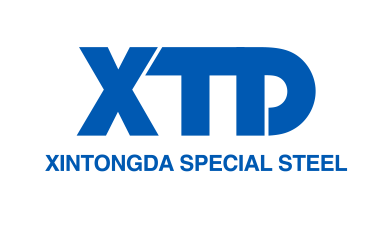| Background | |||||||||||||||||||||||||||||||||||||||||||||||||||||||||||||||||||||||||||||||||||||||||||||||||||||||||||||||||||||||||||||||||||||||||||||||||||||||||||||||||
|
Grades 321 and 347 are the basic austenitic 18/8 steel (Grade 304) stabilized by Titanium (321) or Niobium (347) additions. These grades are used because they are not sensitive to intergranular corrosion after heating within the carbide precipitation range of 425-850°C. Grade 321 is the grade of choice for applications in the temperature range of up to about 900°C, combining high strength, resistance to scaling and phase stability with resistance to subsequent aqueous corrosion. Grade 321H is a modification of 321 with a higher carbon content, to provide improved high temperature strength. A limitation with 321 is that titanium does not transfer well across a high temperature arc, so is not recommended as a welding consumable. In this case grade 347 is preferred - the niobium performs the same carbide stabilization task but can be transferred across a welding arc. Grade 347 is therefore the standard consumable for welding 321. Grade 347 is only occasionally used as parent plate material. Like other austenitic grades, 321 and 347 have excellent forming and welding characteristics, are readily brake or roll formed and have outstanding welding characteristics. Post-weld annealing is not required. They also have excellent toughness, even down to cryogenic temperatures. Grade 321 does not polish well, so is not recommended for decorative applications. Grade 304L is more readily available in most product forms, and so is generally used in preference to 321 if the requirement is simply for resistance to intergranular corrosion after welding. However 304L has lower hot strength than 321 and so is not the best choice if the requirement is resistance to an operating environment over about 500°C. |
|||||||||||||||||||||||||||||||||||||||||||||||||||||||||||||||||||||||||||||||||||||||||||||||||||||||||||||||||||||||||||||||||||||||||||||||||||||||||||||||||
|
Key Properties
These properties are specified for flat rolled product (plate, sheet and coil) in ASTM A240/A240M. Similar but not necessarily identical properties are specified for other products such as pipe and bar in their respective specifications. |
|||||||||||||||||||||||||||||||||||||||||||||||||||||||||||||||||||||||||||||||||||||||||||||||||||||||||||||||||||||||||||||||||||||||||||||||||||||||||||||||||
|
Composition
Typical compositional ranges for grade 321 stainless steels are given in table 1. Table 1. Composition ranges for 321 grade stainless steel
Mechanical Properties Typical mechanical properties for grade 321 stainless steels are given in table 2. Table 2. Mechanical properties of 321 grade stainless steel
Physical Properties Typical physical properties for annealed grade 321 stainless steels are given in table 3. Table 3. Physical properties of 321 grade stainless steel in the annealed condition
Grade Specification Comparison Approximate grade comparisons for 321 stainless steels are given in table 4. Table 4. Grade specifications for 321 grade stainless steel
Possible Alternative Grades Possible alternative grades to grade 321 stainless steels are given in table 5. Table 5. Possible alternative grades to 321 grade stainless steel
Corrosion Resistance Equivalent to Grade 304 in the annealed condition, and superior if a weldment in these grades has not been post-weld annealed or if the application involves service in the 425-900°C range. Subject to pitting and crevice corrosion in warm chloride environments, and to stress corrosion cracking above about 60°C. Considered resistant to potable water with up to about 200mg/L chlorides at ambient temperatures, reducing to about 150mg/L at 60°C. Heat Resistance Good oxidation resistance in intermittent service to 900°C and in continuous service to 925°C. These grades perform well in the 425-900°C range, and particularly where subsequent aqueous corrosive conditions are present. 321H has higher hot strength, and is particularly suitable for high temperature structural applications. Heat Treatment Solution Treatment (Annealing) - heat to 950-1120°C and cool rapidly for maximum corrosion resistance. Stabilizing - heat to 870-900°C for 1 hour per 25mm of thickness and air cool. Stabilization is recommended for most severe service conditions (above 425°C) and particularly for material annealed at the upper side of the annealing temperature range. Stress Relief - Heat to 700°C for 1 to 2 hours and air cool. These grades cannot be hardened by thermal treatment. Welding Excellent weld ability by all standard fusion methods, both with and without filler metals. AS 1554.6 pre-qualifies welding of 321 and 347 with Grade 347 rods or electrodes; high silicon version of 347 is also pre-qualified for welding of 321.
|
|||||||||||||||||||||||||||||||||||||||||||||||||||||||||||||||||||||||||||||||||||||||||||||||||||||||||||||||||||||||||||||||||||||||||||||||||||||||||||||||||
Applications
|
|||||||||||||||||||||||||||||||||||||||||||||||||||||||||||||||||||||||||||||||||||||||||||||||||||||||||||||||||||||||||||||||||||||||||||||||||||||||||||||||||
